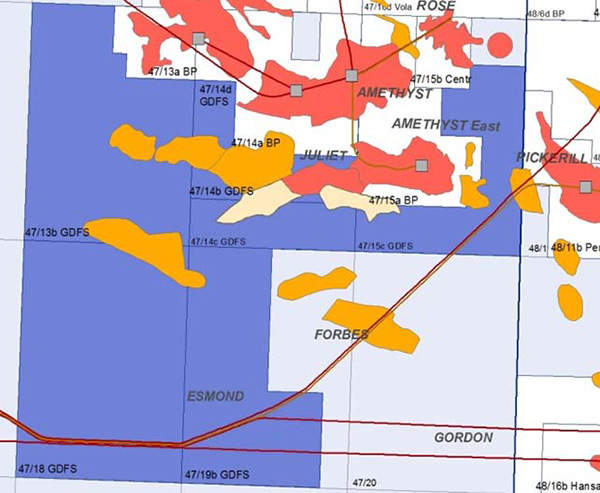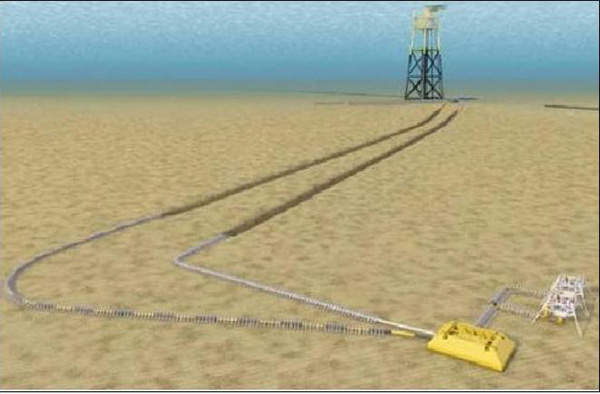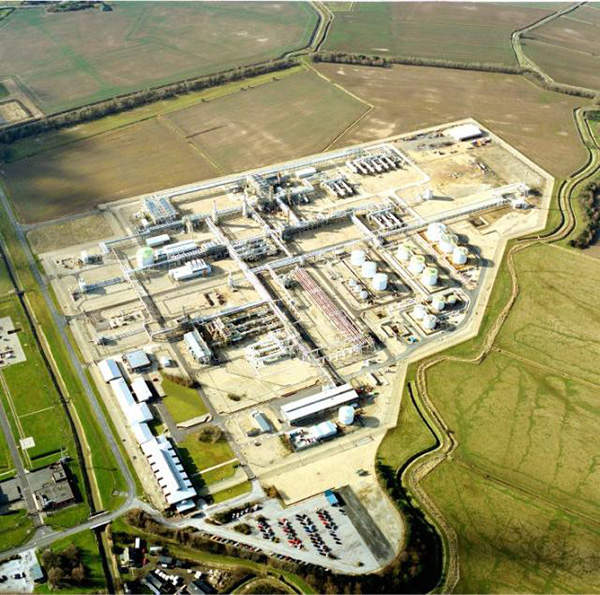Juliet is a shallow-water gas field situated in block 47/14b of the UK Continental Shelf in the southern North Sea, at a water depth of 193.6ft. It is located approximately 24 miles east of the Lincolnshire coast.
ENGIE E&P UK (previously known as GDF SUEZ E&P UK), a fully-owned oil and gas exploration and production subsidiary of GDF SUEZ Group (now Engie), is the operator of the field. Its net equity interest in the field is 51.56%. First Oil Expro has net equity interest of 29.44% in the field.
London-based exploration and production company Hansa Hydrocarbons became the third owner of the Juliet project after acquiring a 19% working interest from First Oil in October 2010. First Oil originally had a 48.44% working interest.
The project partners sanctioned investments for the development of the field in August 2012.
Discovery of Juliet
Juliet was discovered in December 2008. The discovery well, 47/14b-10, was drilled to a total depth of 9,502ft by Noble Corporation’s Noble Piet van Ede drill rig. It flowed at the rate of 38 million standard cubic feet a day (MMcfd).
Geology and reserves of the gas field
The Juliet reservoir is situated in the Southern Gas Basin. Its sands are made up of gas-bearing Leman Sandstone, which itself is part of the larger sandstone group known as Rotliegend. This sandstone is regarded as the most significant natural gas reservoir in the region.
The Juliet has P50 reserves of 56 billion cubic feet. The reserve estimate, however, is expected to step up after the reprocessing of new seismic showed increased gas initially in place (GIIP) levels.
At peak, the field is anticipated to produce 80mmcfd. This was equivalent to 1% of the UK’s total demand for natural gas in 2011.
North Sea-based field development
The field development plan (FDP) for the Juliet was submitted for governmental approval in June 2010. It was ratified by the UK Department of Energy and Climate Change (DECC) in June 2012.
The partners developed the Juliet field as a subsea tie-back to the Pickerill A platform, which is operated by Perenco, an Anglo-French oil and gas firm based in London.
Field development plans included construction of two horizontal subsea wells namely, Juliet West and Juliet East and installation of a new export pipeline up to the Perenco’s platform.
It also included the installation of a control umbilical, riser, J-tube and an eductor on the platform. The export pipeline is approximately 13.7 miles-long and 12inches in diameter.
Development drilling commenced in the second quarter of 2013. Construction of topsides and subsea facilities followed thereafter. First gas from the field was achieved in January 2014 and gas from the second well was achieved in March 2014.
The developed facilities have an operational life of 15 years.
The Juliet gas from Pickerill A platform is routed to Theddlethorpe Gas Terminal (TGT) located on the Lincolnshire coast using existing infrastructure. Inaugurated in 1972, the TGT is owned by ConocoPhillips.
The field was originally planned to be developed as a subsea tie-back to Amethyst A2D platform operated by BP, and production was targeted for December 2011.
The development got delayed as the host platform remained non-committal.
Contracts awarded for the UKCS project
Front-end engineering and design (FEED) study for the Juliet field was carried out by Xodus Group, an international energy consultancy with headquarters in Aberdeen, Scotland.
As per the contract, which was signed in August 2010, the company was also required to conduct a geotechnical assessment and develop guidance notes with respect to subsea systems operations and maintenance, and pre-commissioning.
The contract for subsea development, which comprises installation of control umbilical, export pipeline and subsea manifold, is expected to be awarded in the third quarter of 2012.
The engineering, procurement, installation and construction (EPIC) contract for the Juliet Gas Field was awarded to Technip in January 2013.










